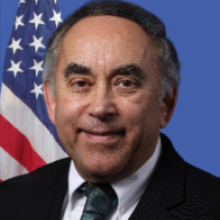
Dr. Larry Ilcewicz is the FAA Chief Scientific and Technical Advisor for Composite Materials. He started work with the FAA in 1998 and has supported many certification activities for small airplanes, rotorcraft, and transport aircraft. He has also worked on accident investigations and service problems involving composites. These experiences helped Larry develop and execute an international plan for composite safety and certification initiatives to work with industry, academia, and other government groups in pursuit of regulatory guidance, training, and standardization. Significant progress was achieved to date and the most recent efforts formed the basis for a FAA Aviation Safety Composite Plan, which outlined work from 2013 to the present and beyond based on new product needs.
Larry came to the FAA from Boeing, where he worked 17 years on various programs in the commercial transport aircraft division. This included support to 737, 757, 767 and 777 aircraft in various stages of development, production, and service. Larry was also principal investigator for a large NASA-funded research program to develop composite design and manufacturing concepts for a wide-body transport fuselage in the 1990s. He has authored/co-authored more than 90 technical publications. He served as co-chairman for Composite Materials Handbook 17, CMH-17, since joining the FAA. He was the only member of the United States Department of Transportation to win a Presidential Rank Award in 2013. In 2019, he received the AIAA Crichlow Prize, which included an invitation to give the Structures, Structural Dynamics, and Materials (SDM) Lecture, which was a basis for the UCSD seminar to be given.
This presentation summarizes existing practices for composite aircraft certification, with an emphasis on structural aspects, and discusses the limitations and lessons learned from today’s “traditional” composite structures. It describes procedures that can be used to certify advanced materials and processes which may have increased levels of variability, unfamiliar structural performance, nonclassical (e.g., nonlocal) behavior, and randomized properties. Provided such complexity can be reliably controlled by maintaining repeatable materials and processes in fabricating and assembling parts, both design and production certification can be achieved. The related technological advances from real applications that meet safety, form, fit and functional requirements, while achieving product value, will yield the practical experience, knowledge, and capable workforce necessary for future applications.
